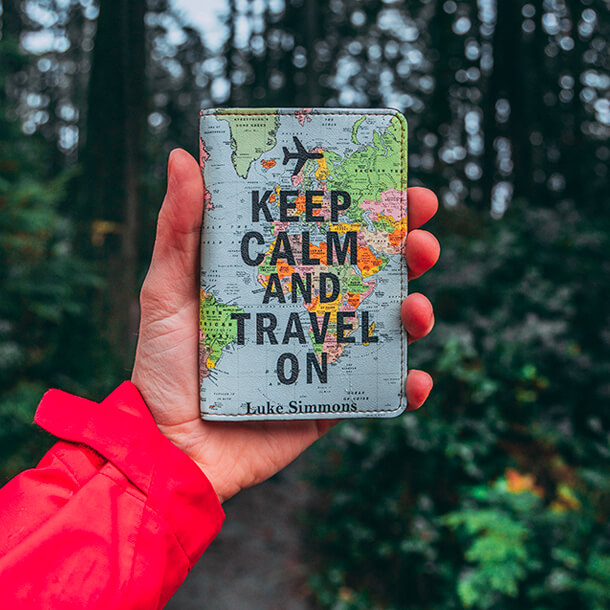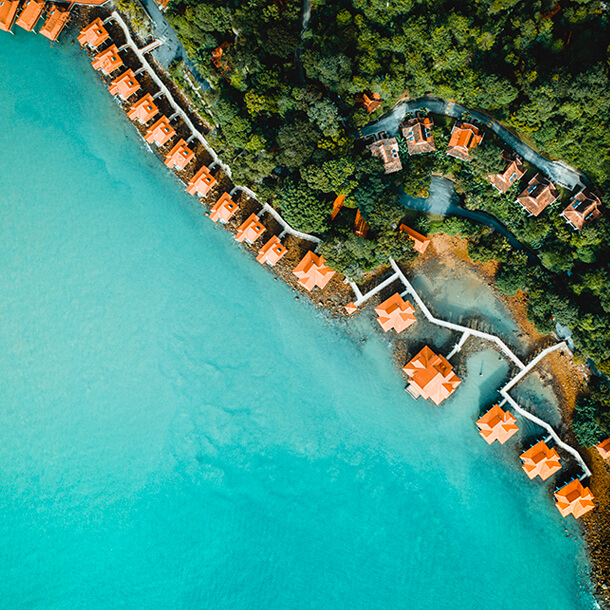What is Golden Hour, Blue Hour, and Twilight? A Landscape Photographers Guide to the Best Times to Shoot
Knowing the best times of day to shoot can make all the difference between a photo that falls flat and one that stands out from the crowd.
Golden hour, blue hour, and twilight are special times of day before, during, and after sunrise and sunset when the light can dramatically enhance landscape photographs.
In this article, you will learn what golden hour is and how shooting at this time of day can improve your images.
You will also learn about blue hour and the different types of twilight, and the types of photos that work best at these time of day.
If you got value from this article, please support my work by sharing it - or you can buy me a coffee.
I currently do NOT use affiliate links or receive compensation for products I recommend. I do this so my work stays honest and in line with my values. I only recommend gear that I personally use and believe is the best.
What is Golden Hour?

Golden hour is the period of time shortly after sunrise and before sunset when the sun is at a low angle, creating soft, warm light. During this time, the sun is low in the sky, creating soft light with long shadows. This type of light makes for beautiful photographs because it enhances colors and adds dimension to landscapes.
Golden hour occurs twice a day - once in the morning just after sunrise and again in the evening just before sunset. The exact length of this period varies depending on your location and season but typically lasts for about 30 minutes to one hour each time.
What makes the light appear “golden”?
If the Earth had no atmosphere we wouldn’t get any of the beautiful colors that we see in the sky before and after sunrise and sunset.
When you see color in the sky (e.g. blue, red, orange, pink, etc.), you are really just seeing a specific wavelength of white sunlight that has been scattered by particles in the air.
Earth’s atmosphere is filled with microscopic particles of dust, water, smoke, oxygen, nitrogen, and other large and small molecules.
As light travels through the Earth’s atmosphere, these suspended particles scatter it in different directions.
Also, different wavelengths of light are scattered in different amounts than others, depending on the type and size of the particle that scattered it. This is why the sky or the horizon may appear different colors at different times of day. For example, this phenomenon explains why the sky may be a dark, saturated blue in the middle of the day, and the horizon may appear pastel orange at dusk.
The light that we experience during the golden hour is a result of the sun's low angle and its passage through more of the Earth's atmosphere.
The thicker layer of atmosphere scatters blue and violet wavelengths, allowing more orange and red spectrum to reach us.
These orange and red wavelengths of light are therefore the predominant wavelengths that illuminate a landscape during golden hour, giving the scene a warmer, more diffuse look.
Golden hour landscape photography tips
Every shooting scenario will be different so no specific settings will work for every photo, but in general, these tips will work for most golden hour landscape scenes:
- Get to your location early - arrive at your desired spot before the sun rises or sets so you can scout out the best angles and composition for your shot without having to rush and potentially miss the small window of golden hour light. This will also give you time to set up any equipment, such as a tripod, that you may need.
- Watch for clouds - check the weather right before you head out because if clouds cover the sun, you won’t get the beautiful golden light you are looking for. At the same time, if clouds are in the sky but not covering the sun, they will usually light up in brilliant colors that can significantly enhance the sky in a photo.
- Shoot in manual mode or aperture priority mode - the camera can have trouble metering the best exposure at this time of day because the sky is usually extremely bright compared to the dark shadow.
- Expose to the Right using your camera’s exposure compensation to bring out more detail in the shadows and then reduce the exposure when post processing the image.
- Set your ISO to the lowest possible ISO (e.g. base ISO like 64 or 100) and compensate by slowing down your shutter speed in order to reduce noise
- Use a tripod - since longer exposures require your camera to be extremely still
- Try using a circular polarizer filter (CPL) - this will enhance saturation in the sky even further.
- Look for interesting foreground elements - rocks, trees etc., that can add depth to your image by providing contrast against the glowing sky background
- Try HDR photography - when the contrast between the shadows and the sky is too high to capture in a single image, this technique will help you increase the dynamic range of an image.
What is Blue Hour?

Blue hour is a period of time immediately after golden hour, just before sunrise and after sunset when the sky takes on a deep, saturated blue hue.
While most people pack up their camera’s after golden hour, you can actually get some incredible images from the light during blue hour and twilight.
During this time, the sun is below the horizon but still emits enough light to create a beautiful glow on the sky and surrounding environment.
Unlike golden hour which has warm tones from direct sunlight, blue hour has cooler tones due to indirect sunlight reflecting off particles in the atmosphere such as dust or smoke.
The length of blue hour depends on your location and season; however, it usually lasts between 20-40 minutes before sunrise and after sunset depending on how far north or south you are located relative to Earth’s equator.
It’s definitely worth arriving to a photo shoot early enough before sunrise or staying later after sunset to catch the vibrant colors that can appear in the sky.
What is Twilight?

Twilight is a special time of day when the sun has set and the sky begins to darken. It's an ideal time for landscape photography, as it offers unique lighting conditions that can create stunning images. There are three different types of twilight:
- civil
- nautical
- astronomical

Civil twilight
Civil twilight is part of blue hour and occurs when the sun is between 0° and 6° below the horizon. During this period, there is still enough light in the sky to still see some detail of features on the landscape.
At this time, the moon and some bright stars are clearly visible depending on atmospheric conditions such as clouds or dust particles in the air.
Since sunlight has to travel through more atmosphere at this time, it gets scattered and refracted by particles in the air which can give you vibrant colors like pink hues that you don’t see at any other time of day.
Another benefit to shooting during civil twilight is capturing Earth’s shadow on your images.
Earth casts a shadow on it’s own atmosphere, and it appears during this time as a blue horizontal band along the horizon.

Above Earth’s shadow you will typically see the Belt of Venus, which is a pink horizontal band.
The blue and pink bands of color from Earth’s shadow and the Belt of Venus is sometimes referred to as the twilight wedge, and it is most apparent directly opposite from the rising or setting sun.
The twilight wedge is more vivid on clear days and at higher altitudes.
Nautical twilight
Nautical Twilight occurs when the sun is between 6° and 12° below the horizon.
On a clear night, it is typical to see a vibrant orange band of color just above the horizon.
Above this blue band, the sky appears in deep blue hues.

During this time, you start to lose detail in features of the landscape, but silhouettes along the horizon are more apparent.
This is a great time to create interesting compositions using silhouettes that stand out against the gradient of complimentary colors in the sky.
Astronomical twilight
Astronomical twilight occurs when the sun reaches 12° to 18° below the horizon.
At this point, the sky is mostly a dark blue and few features of the landscape are visible.

The horizon may be visible and possibly silhouettes of some large features on the landscape.
During this time, most bright stars become visible in clear skies.
Final thoughts
Knowing the best times of day to shoot can significantly affect the quality of your photographs.
By studying the ways that the light changes and passes through the atmosphere at different times of day, you can more effectively utilize different types of light in your photos.
Even though golden hour gets all the attention for being the best time of day to shoot for landscape photography, don’t discount the beauty that can be captured during blue hour and sunset.
What are your favorite times of day to shoot landscapes? Do you ever shoot at blue hour or twilight? Let me know!
%20(3).png)










